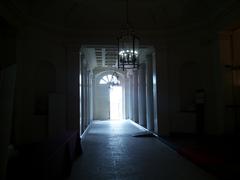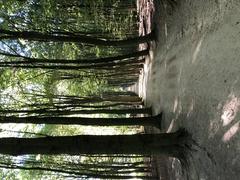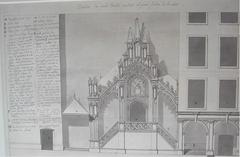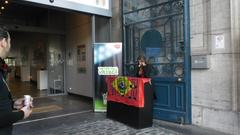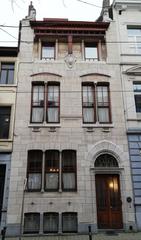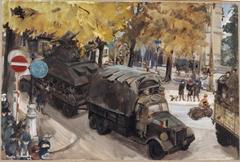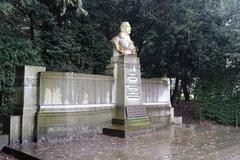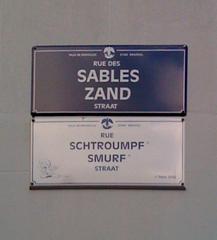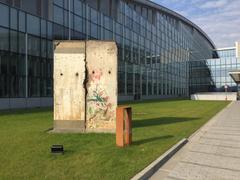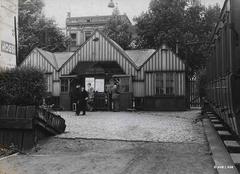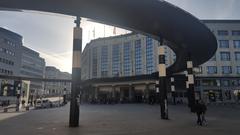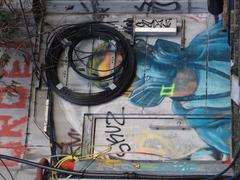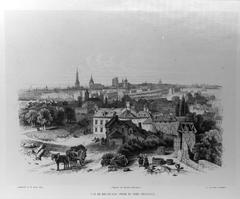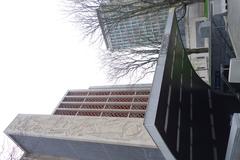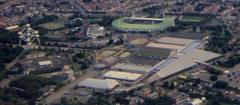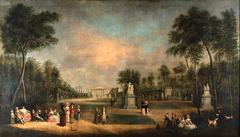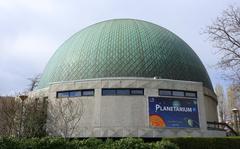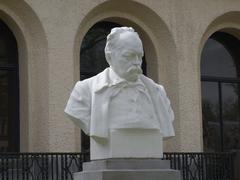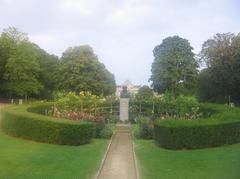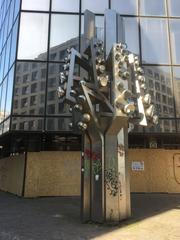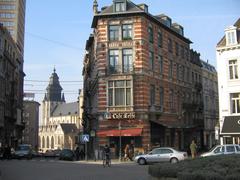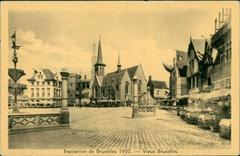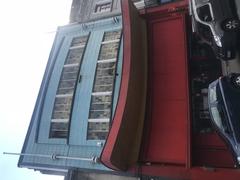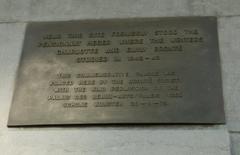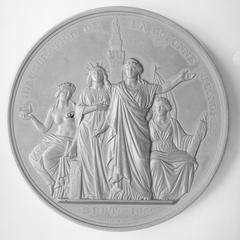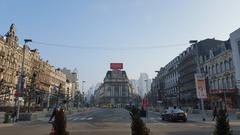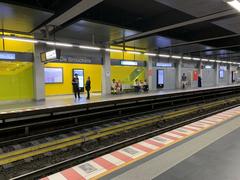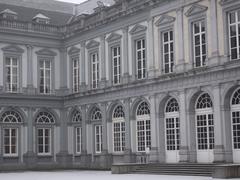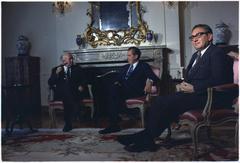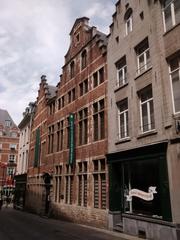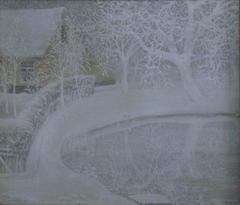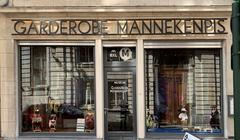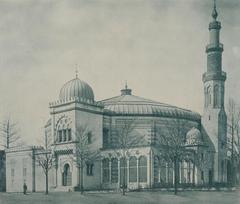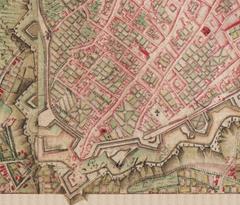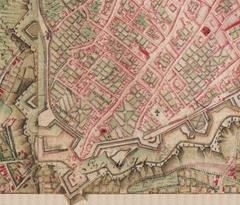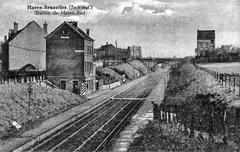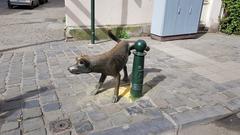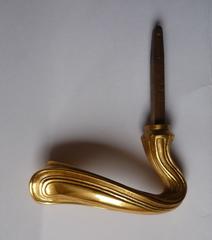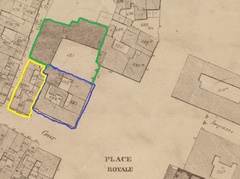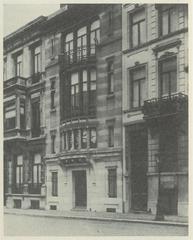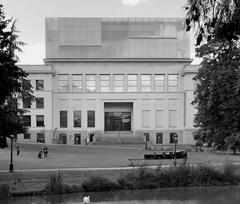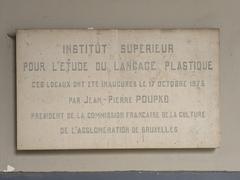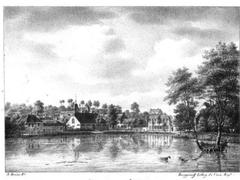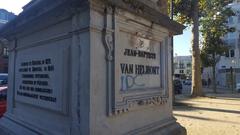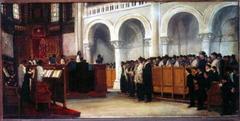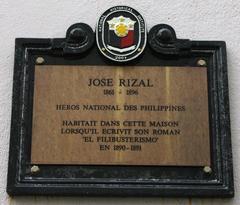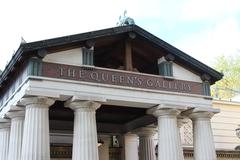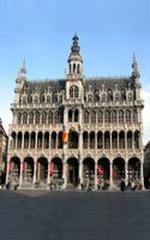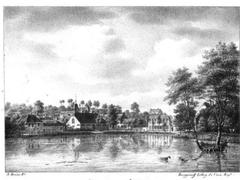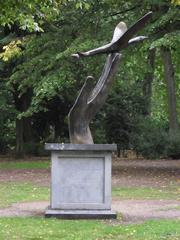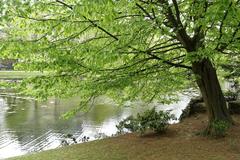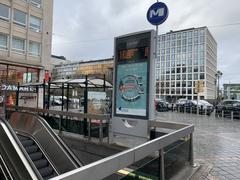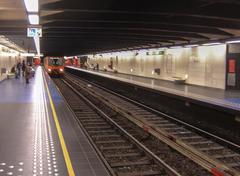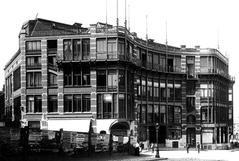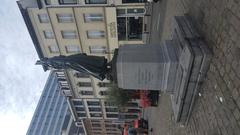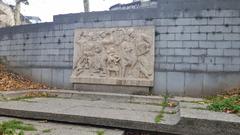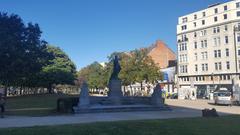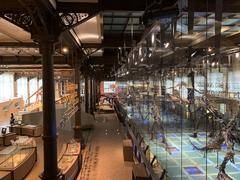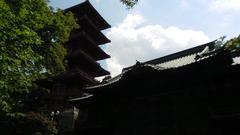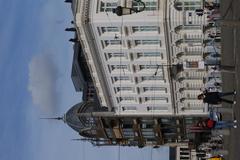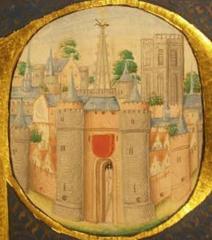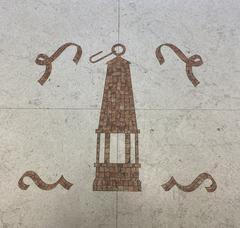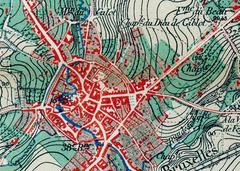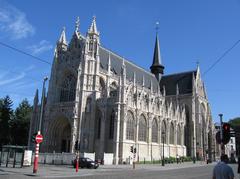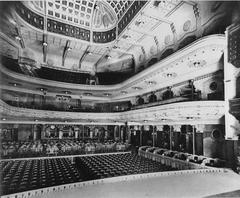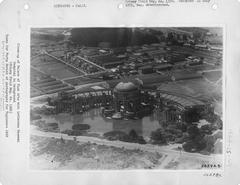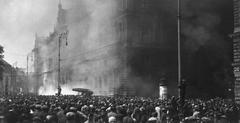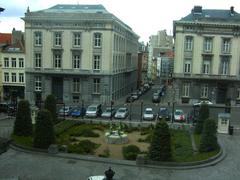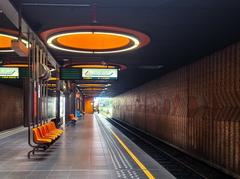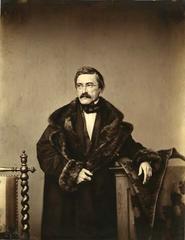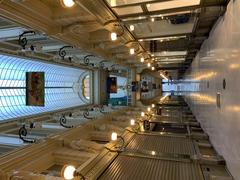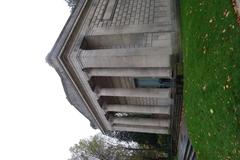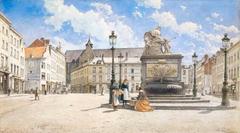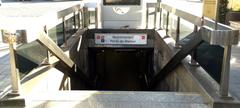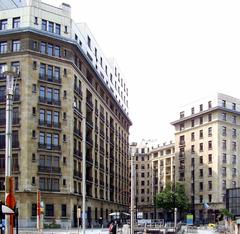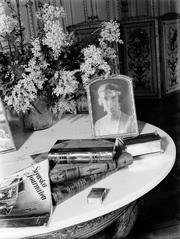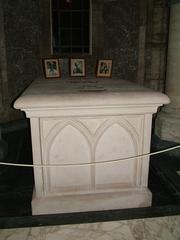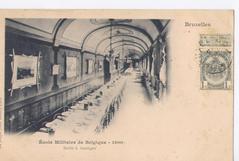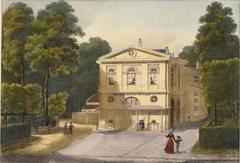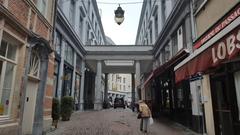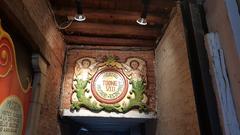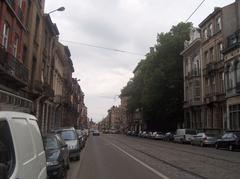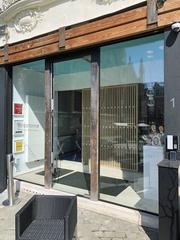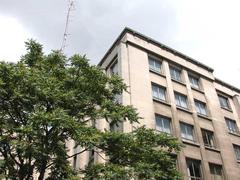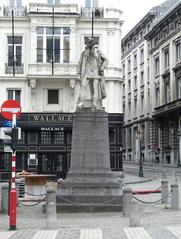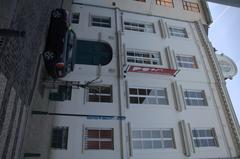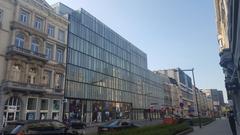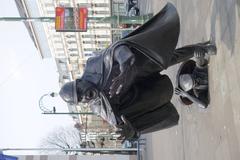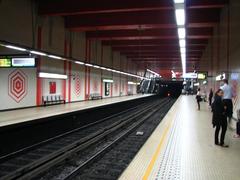Visiting Kasteel Groot-Bijgaarden: A Complete Guide
Date: 18/07/2024
Introduction
Nestled in the charming municipality of Dilbeek, just outside Brussels, Kasteel Groot-Bijgaarden is a historical marvel that beckons visitors with its rich tapestry of history and vibrant floral displays. This magnificent castle dates back to the 12th century, having evolved from a medieval fortress protecting the trade routes between Brussels and Ghent to a Renaissance residence embodying the grandeur of the Counts of Egmont. Throughout the centuries, Kasteel Groot-Bijgaarden has weathered periods of conflict, prosperity, and decline, each epoch leaving an indelible mark on its architecture and legacy (source).
Today, Kasteel Groot-Bijgaarden stands as a testament to Belgium’s cultural heritage, offering a unique blend of historical intrigue and modern-day accessibility. Its meticulously landscaped gardens, particularly during the annual Floralia Brussels flower show, attract visitors from around the globe. Whether you are a history buff, a garden enthusiast, or a casual tourist, Kasteel Groot-Bijgaarden promises an immersive experience that captures the essence of Belgium’s storied past and vibrant present (source).
Table of Contents
Discover the Rich History of Kasteel Groot-Bijgaarden
The story of Kasteel Groot-Bijgaarden is a captivating tapestry woven from threads of conflict, nobility, and resilience. Its roots reach back to the 12th century, entwined with the tumultuous history of the region.
Early Beginnings (12th - 14th Centuries)
The earliest recorded mention of Groot-Bijgaarden dates back to 1110, referencing a fortified structure, likely a wooden keep, strategically positioned along the Maalbeek River. This initial stronghold served as a defensive outpost for the Lords of Bijgaarden, protecting the valuable trade route between Brussels and Ghent.
During the 13th century, the Lords of Bijgaarden, allied with the powerful Dukes of Brabant, further fortified their domain. The wooden structure was replaced with a more formidable stone construction, marking the first significant step towards the castle we recognize today.
A Period of Prosperity and Expansion (14th - 16th Centuries)
The 14th century ushered in an era of prosperity for Groot-Bijgaarden. The castle, now under the ownership of the Counts of Flanders, underwent significant expansion and renovation. Its strategic importance diminished, allowing it to evolve from a purely defensive structure into a more comfortable residence.
The 15th century saw the castle change hands again, becoming the property of the powerful Counts of Egmont. This influential family, known for their wealth and political clout, further enhanced the castle’s grandeur. They added residential wings, expanded the surrounding gardens, and transformed Groot-Bijgaarden into a symbol of their prestige.
Tumult and Transformation (16th - 18th Centuries)
The 16th century brought about a period of turmoil for Groot-Bijgaarden. The Dutch Revolt against Spanish rule engulfed the region, and the castle, caught in the crossfire, suffered significant damage. Following the revolt, it changed hands several times, its ownership reflecting the shifting political landscape.
Despite the unrest, the castle underwent further transformations during the 17th and 18th centuries. New owners, seeking to erase the scars of conflict, remodeled sections of the castle in the then-popular Renaissance and Baroque styles. These renovations added a touch of elegance and sophistication, blending with the existing medieval architecture to create a unique and captivating aesthetic.
Decline and Renewal (19th - 21st Centuries)
The 19th century witnessed a period of decline for Groot-Bijgaarden. Neglected and falling into disrepair, the once-grand castle was relegated to the status of a farm. Its future seemed uncertain until the early 20th century when it was purchased by the Belgian state.
Recognizing its historical and architectural significance, the Belgian government undertook a large-scale restoration project. This meticulous endeavor, spanning several decades, breathed new life into the aging structure. The restoration focused on preserving the castle’s historical integrity while also adapting it for modern use.
Kasteel Groot-Bijgaarden Today
Today, Kasteel Groot-Bijgaarden stands as a testament to its enduring legacy. It serves as a captivating museum, offering visitors a glimpse into its rich past. The castle’s grounds, meticulously landscaped and adorned with vibrant flower displays, particularly during the annual Floralia Brussels event, attract visitors from around the globe.
Visitor Information
Ticket Prices
Admission prices vary based on the season and special events. Please visit the official Kasteel Groot-Bijgaarden website for the latest information on ticket prices and discounts.
Opening Hours
The castle is open to visitors from April to October. Typical visiting hours are from 10:00 AM to 6:00 PM, but it is advisable to check the official website for any changes or special event schedules (source).
Travel Tips
Kasteel Groot-Bijgaarden is easily accessible by public transport from Brussels. Take the train to Groot-Bijgaarden station, followed by a short walk or bus ride to the castle. Parking is also available for those traveling by car.
Special Events and Guided Tours
Kasteel Groot-Bijgaarden hosts various special events throughout the year, including the renowned Floralia Brussels flower show. Guided tours are available, providing an in-depth exploration of the castle’s history and architecture. Advance booking is recommended for these tours.
Photographic Spots
The castle and its grounds offer numerous picturesque spots perfect for photography. The blooming gardens, historic architecture, and serene ponds make for stunning backdrops.
Accessibility
The castle is committed to providing access to all visitors. While some areas may have limited accessibility, efforts are being made to accommodate visitors with mobility challenges. Check the official website for detailed accessibility information (source).
FAQ
What are the visiting hours for Kasteel Groot-Bijgaarden?
The castle is typically open from April to October, 10:00 AM to 6:00 PM. Always verify the latest schedule on the official website.
How much are the tickets for Kasteel Groot-Bijgaarden?
Ticket prices vary. Please visit the official website for the most up-to-date information.
Are there guided tours available?
Yes, guided tours are available and offer a comprehensive look into the castle’s history. Booking in advance is recommended.
Is Kasteel Groot-Bijgaarden accessible for people with disabilities?
Efforts are made to ensure accessibility, though some areas may be limited. Check the official website for detailed accessibility information.
Conclusion
Kasteel Groot-Bijgaarden is more than just a historical site; it is a living museum that encapsulates centuries of history, architectural evolution, and cultural significance. From its early beginnings as a medieval stronghold to its present-day status as a vibrant cultural hub, the castle offers a unique journey through time. Visitors can explore its rich history through guided tours, marvel at the stunning floral displays during the Floralia Brussels event, and enjoy the tranquil beauty of its landscaped gardens.
With its strategic location near Brussels, the castle is easily accessible and offers a variety of experiences that cater to diverse interests. Whether you’re exploring the castle’s grand architecture, participating in special events, or simply enjoying a leisurely stroll through the gardens, Kasteel Groot-Bijgaarden promises a memorable visit. Plan your trip today and immerse yourself in the enchanting history and beauty of this Belgian gem (source).
References
- Discover the Rich History and Visiting Hours of Kasteel Groot-Bijgaarden in Brussels (source)
- Floralia Brussels (source)
- A Comprehensive Guide to Visiting Kasteel Groot-Bijgaarden - History, Attractions, and Visitor Information (source)
- Visiting Kasteel Groot-Bijgaarden - Location, Tickets, and Accessibility Guide (source)

